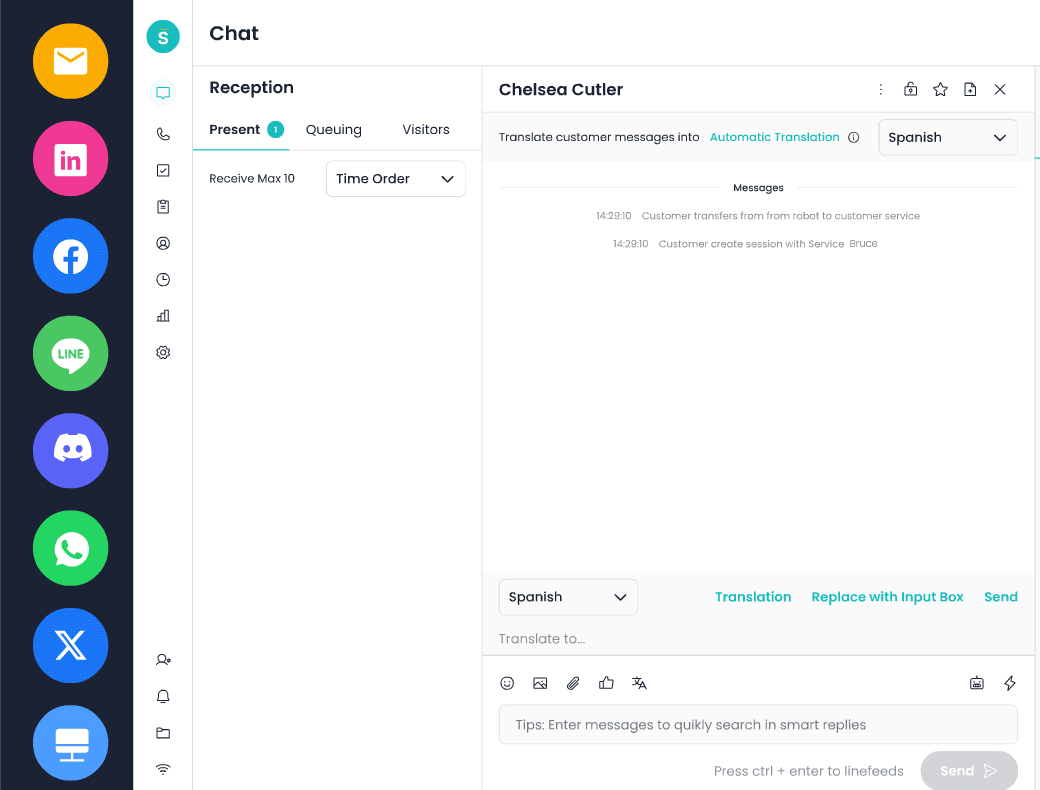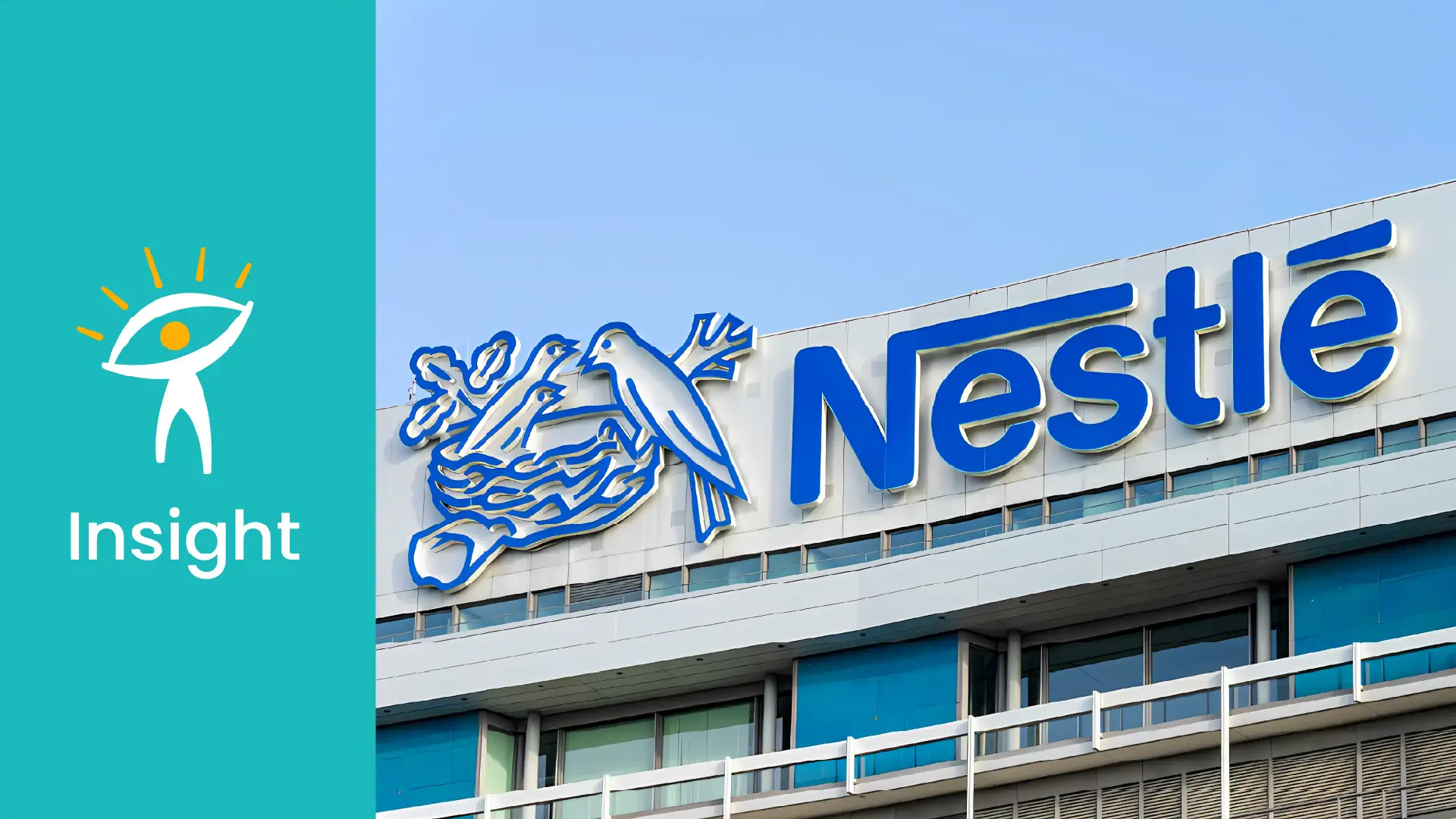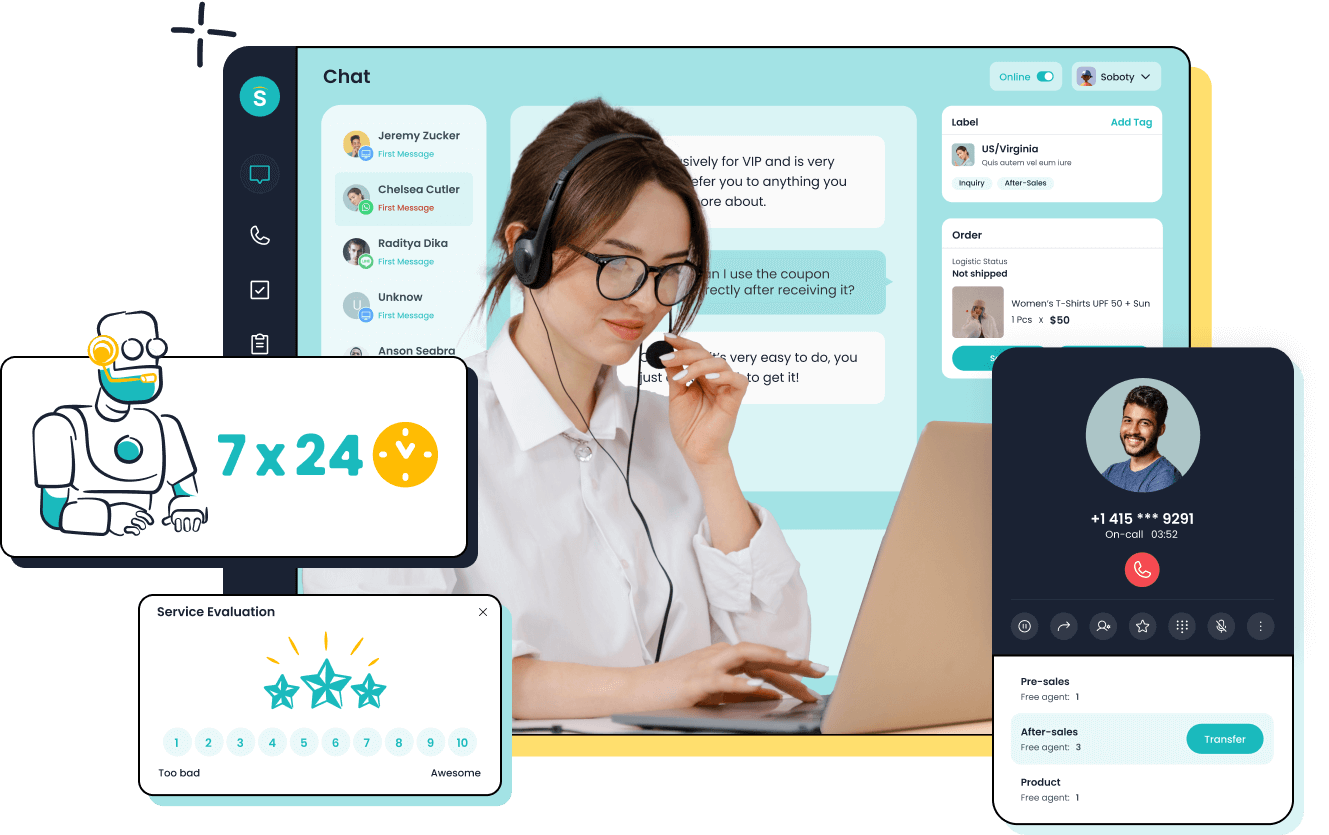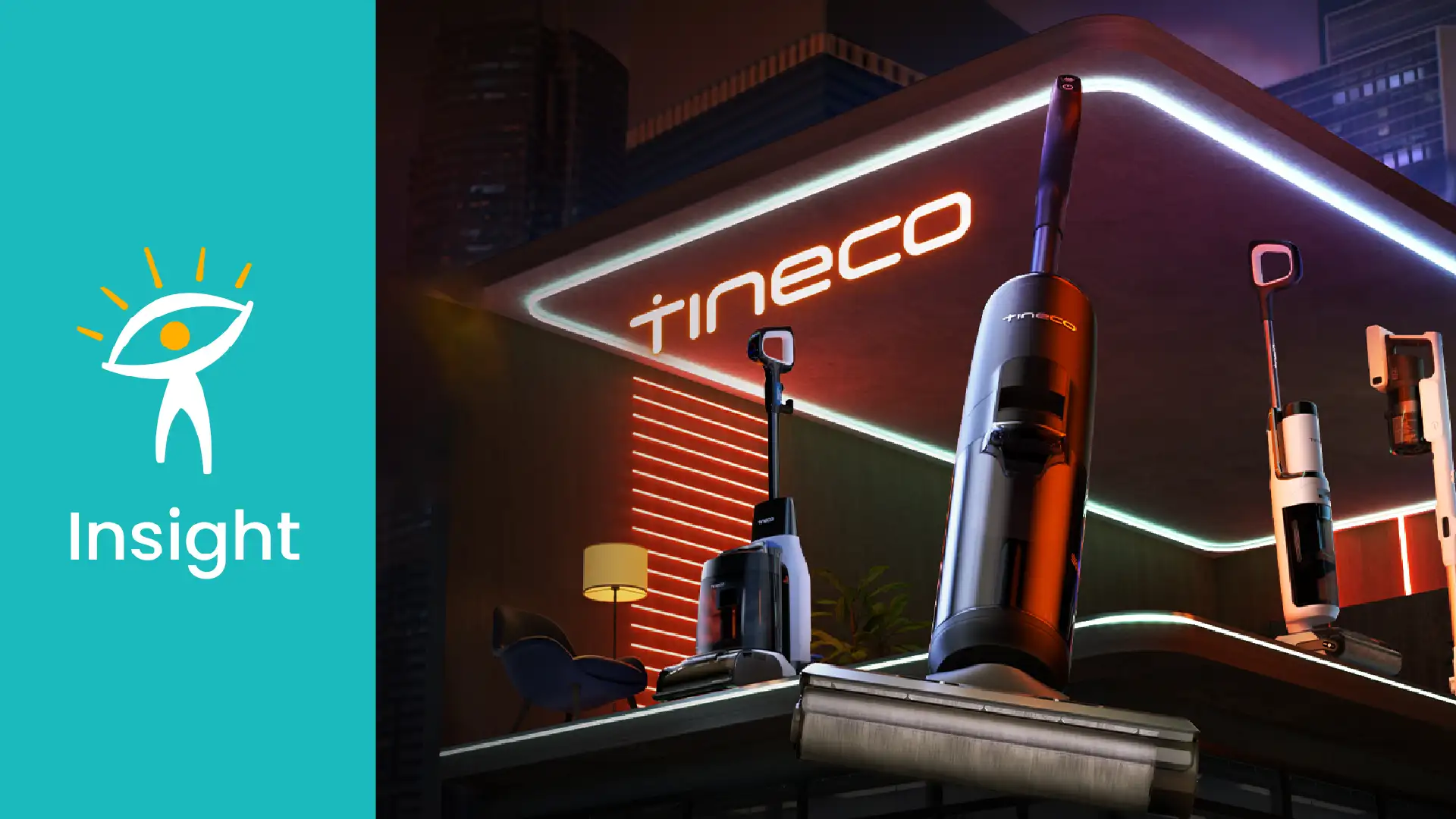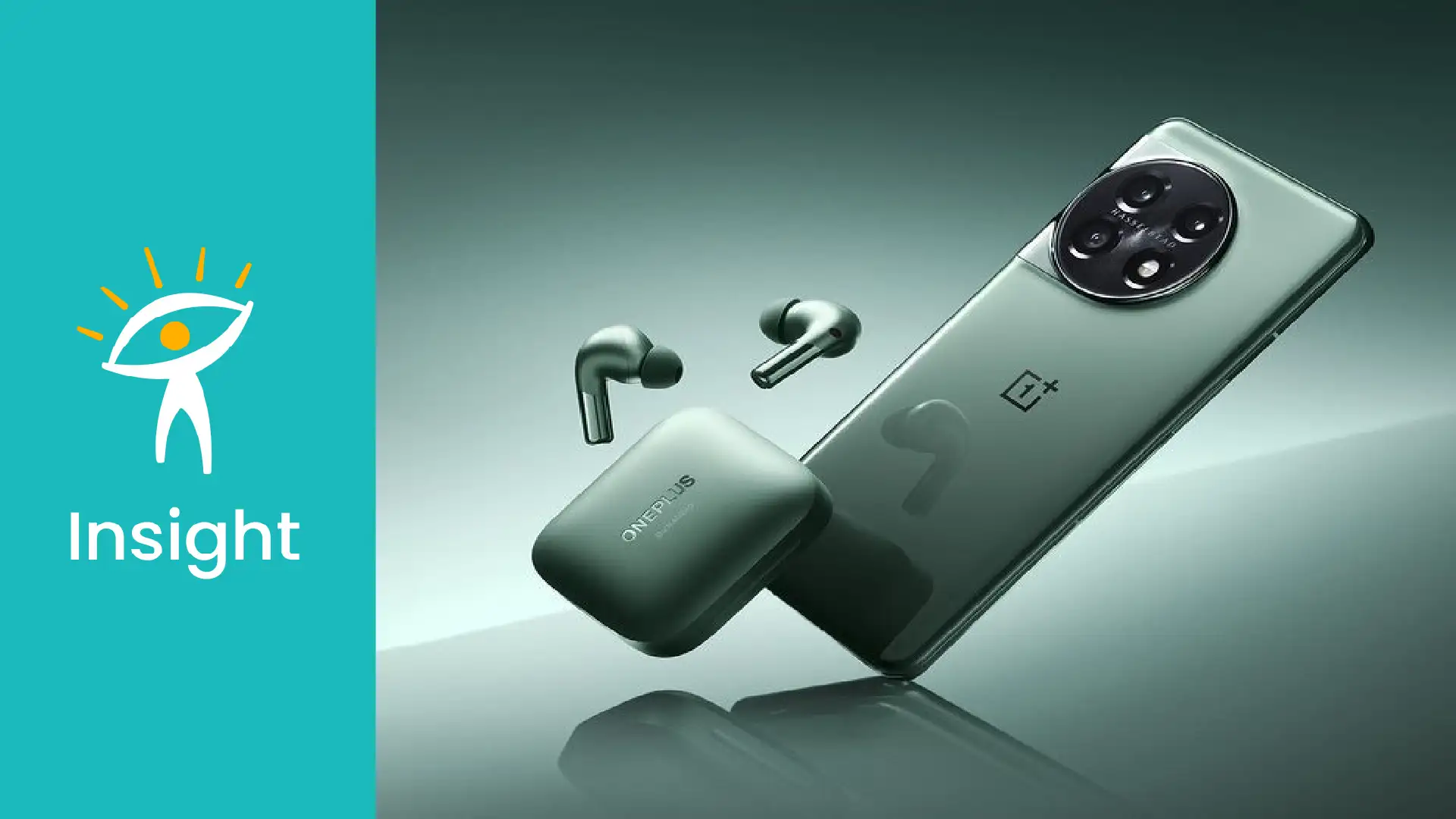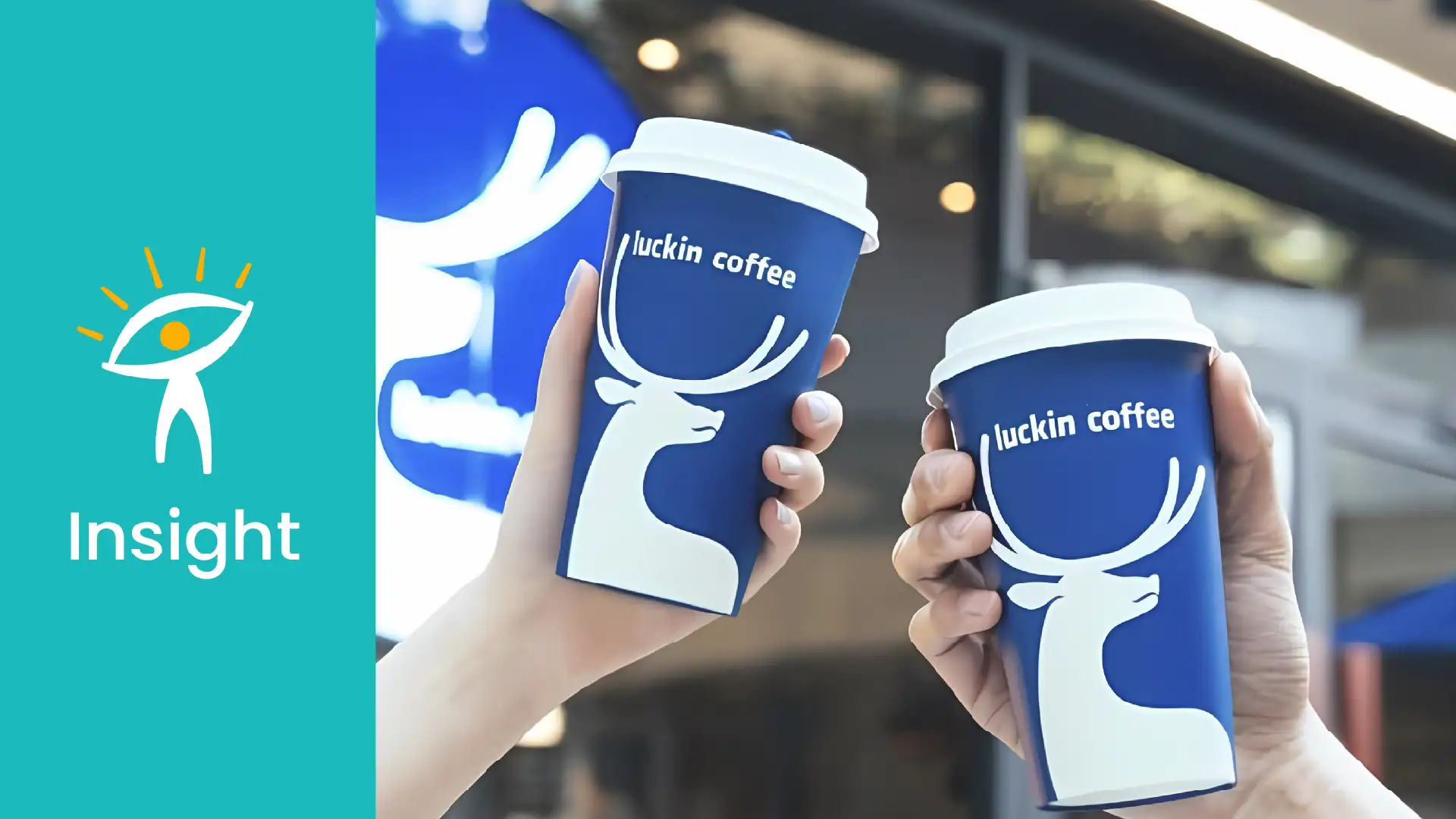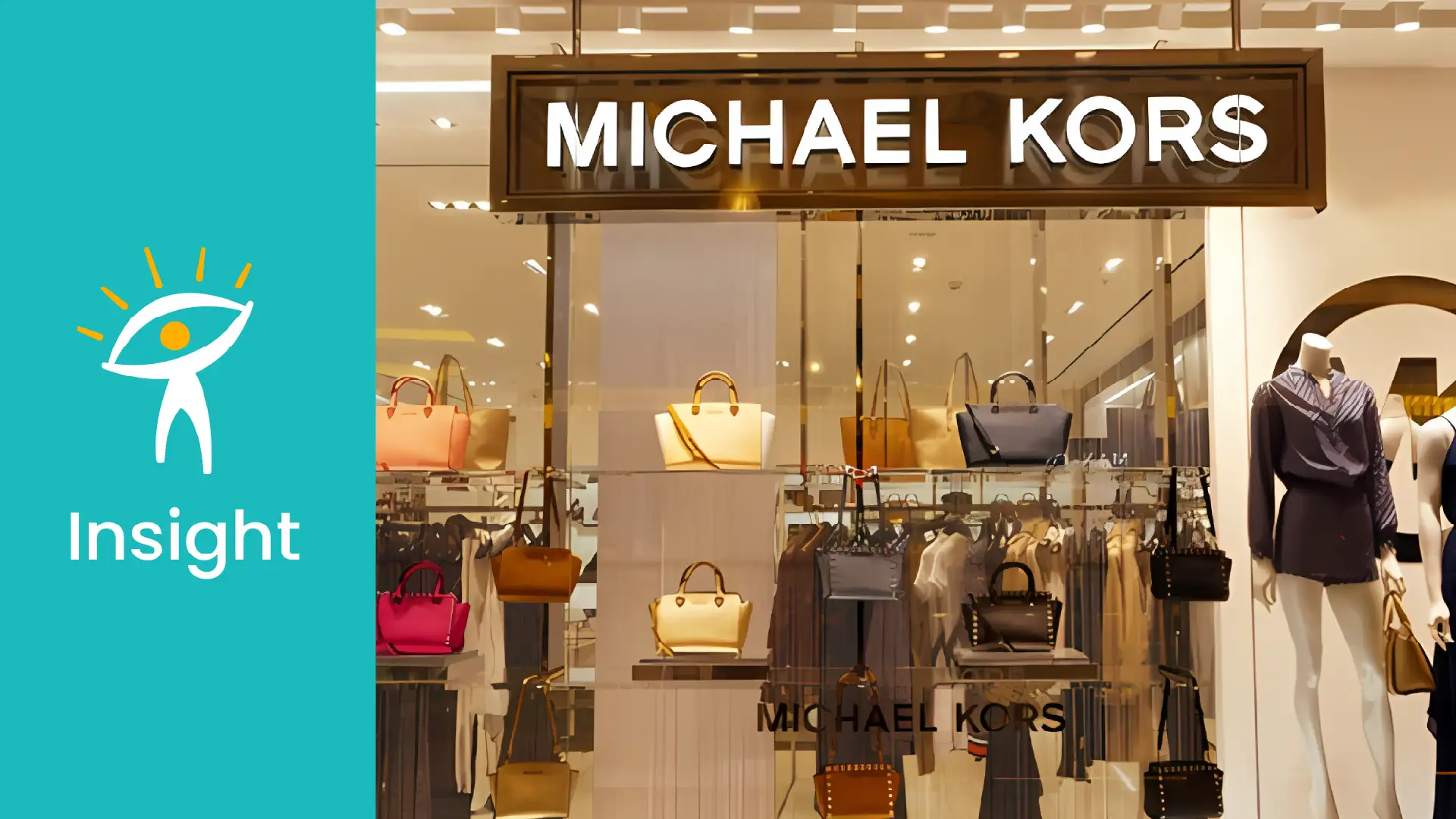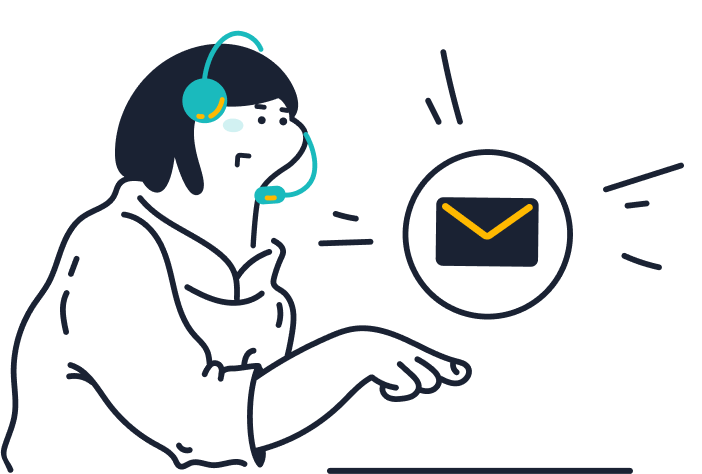Nestlé, the world’s largest food and beverage company, is iconic in the global economy. This Swiss multinational, which dates back to 1867, has an incredible portfolio of more than 2000 brands, including names such as Nescafé, KitKat, and Purina.
What makes Nestlé stand out is not just its size but its approach to innovation and customer engagement. In the past, Nestlé has been a brand connected to health and wellness-focused products as they adapt their products according to consumer needs.
This article will explore Nestlé’s journey from its humble beginnings to its current status as a global powerhouse. We will explore its unique history and growth, how it innovated with a broad product portfolio that spans multiple categories, its global presence, and the advancements in customer service and technology.
History and Growth of Nestlé
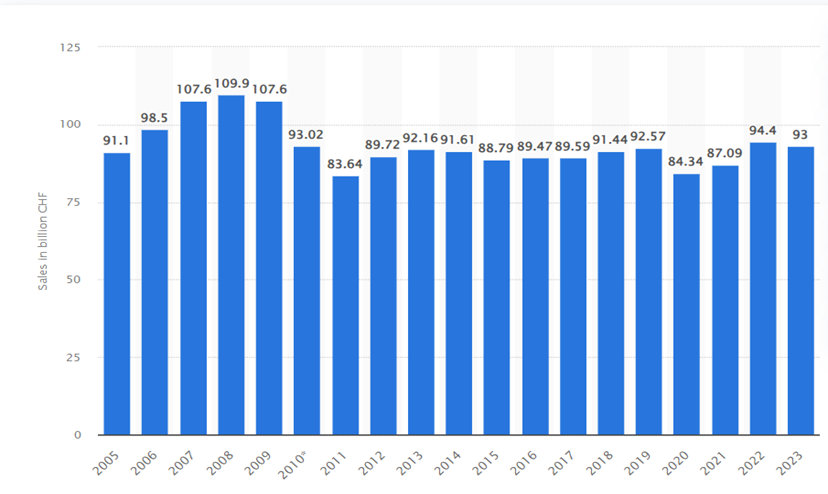
Nestle Growth Statistics From 2005-2023 Image Source: Statistics.com
Nestlé’s roots trace back to 1867 when German-born pharmacist Henri Nestlé created an infant cereal that would later revolutionize child nutrition.
It was initially invented to feed malnourished babies and since the mixture of milk, wheat germs, and sugar looked like a fantastic fix for mothers who could not produce breast milk.
In 1905 Nestlé merged with the Anglo-Swiss Condensed Milk Company, leading to further global expansion. As a company founded on innovation, it quickly grew beyond its origins, focusing on powdered milk and infant formula. Source.
In the early 20th century, Nestlé expanded again — internationally for the first time — with the first wave of its European dairy market acquisitions. Following World War II, Nestlé turned its attention to the Americas, where it established a consumer product foothold in the United States with an expanded line of condensed and evaporated milk products.
The 1938 introduction of Nescafé, an instant coffee that would soon become vital to both soldiers and civilians during World War II, represented a critical juncture in its positioning strategy in the United States.
Nescafé was instrumental in establishing Nestlé as a household name in the U.S., with over 1 million cases sold in 1943 alone. Source. In 2007, Nestlé acquired Gerber, a renowned baby food brand, for $5.5 billion. Source.
In 2001, Nestlé made headlines when it acquired Purina, the well-known pet care brand, for $10.3 billion. Source.
Nestle Product Portfolio and Global Influence
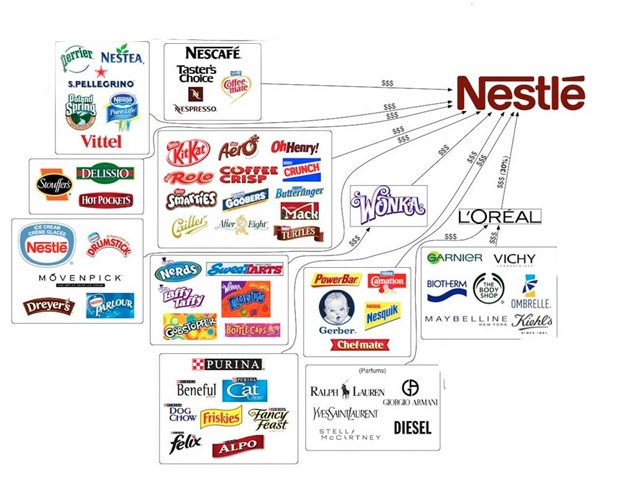
Nestle Brands Image Source: The Brand Hopper
Nestlé has a wide variety in the type of products sectioned across food, beverages, dairy pet care, and nutrition. Nestle’s product portfolio include KitKat in confectionery, Nescafé in beverages, Purina in pet care, and Gerber in infant nutrition.
At the same time, its brands such as Garden Gourmet and Sweet Earth supply plant-based food options aimed at Western consumers of meat alternatives. The growth of the plant-based food category surged in 2020 to 27% in the U.S., and Nestlé is moving quickly to increase its presence through new product innovation across Europe and North America. Source.
Indeed, Nestlé is a global food and beverage company present in over 190 countries, which makes it one of the largest ones in the world.
Its ability to adapt to local consumer needs has been a critical factor in its global success. Nestlé’s recent reports reveal that Nescafé alone accounted for sales of over CHF 93.0 billion in 2023 which highlighted its essential place within the umbrella Source.
Its revenue for 2022 was approximately CHF 94.4 billion, illustrating its dominance and impact on the global food and beverage market. Source.
Engagement on Third-Party Platforms
Partnerships with E-Commerce Giant Alibaba
Nestlé has established a significant partnership with Alibaba Group in China, aiming to grow online sales and enhance brand visibility. The collaboration allows Nestlé to introduce popular products such as Nido milk powder, Damak chocolate, and Nescafé Dolce Gusto coffee machines on Alibaba’s Tmall.com, which is the largest shopping website for brands in China.
Nestlé signed a partnership with Alibaba Group in China to grow online sales, build key brands, and offer new products to millions of consumers. Source. To promote its products and engage consumers, Nestlé has launched various online campaigns in partnership with Alibaba. For example, the “Superbrand” campaign featured 154 products from 30 of Nestlé’s brands, with 67 of these being introduced to Chinese consumers for the first time from overseas markets.
Nestlé’s online sales in China have been growing at an impressive rate of over 25% annually” is from the Nestlé press release titled “Winning with e-commerce: Nestlé China signs Alibaba partnership. Source
Nestle’s Engagement With Amazon
Nestlé has had success with the global launch of its Cailler super-premium chocolate brand using Amazon as the primary retailer. Source.
For instance, Nestlé Purina collaborated with Zenith UK to unify its advertising campaigns on Amazon, which resulted in a remarkable 138% increase in sales within the first month of implementing a cohesive strategy. Source.
The integration of insights from Amazon Marketing Cloud (AMC) allowed Nestlé to refine its targeting and optimize ad placements based on consumer behavior, leading to a 661% increase in ROAS and a 390% improvement in conversion rates. Source.
Nestlé’s partnership with Amazon extends beyond advertising; it includes leveraging data analytics to gain deeper insights into consumer behavior. This data-driven approach helps Nestlé identify key audience segments and adjust budgets for different advertising tactics, ultimately driving higher sales.
Nestle Offline Service Channel
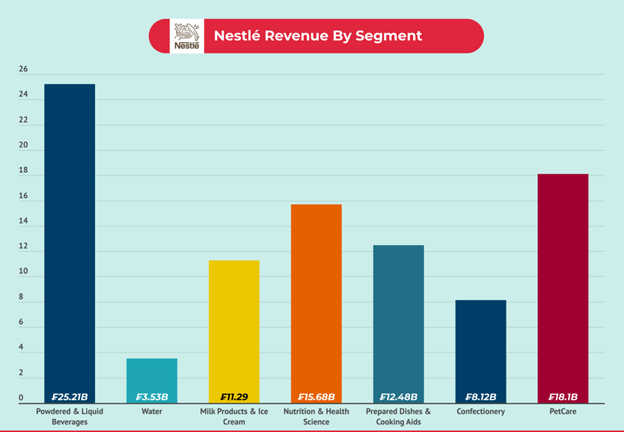
Nestle Revenue By Segments Image Source: Four Week
Distribution Through Retail Partners
Nestlé relies on partnerships with major retail chains like Walmart, Carrefour, and Tesco to ensure that its products reach customers efficiently. In other words, the company has a wide spread of products that they can get in front of anyone anywhere.
Nestlé’s sales are increasingly being driven by e-commerce, which accounted for 15.8% of total sales in 2022, with a target to reach 25% by 2025. Source
Engaging In-Store Promotions
In-store promotions play one of the deciding roles in the offline service channels of Nestlé. Blume regularly stages sampling experiences where consumers can try new products before buying them. According to a study from the Food Marketing Institute, 70 percent of buying decisions are made at the store level — and shoppers are much more likely to purchase something after they have tasted it Source.
“We’re not in a product and service industry anymore. It’s all about experience—it’s giving goosebumps”. This philosophy drives Nestlé to create memorable experiences that resonate with customers. Source.
In-store promotions allow consumers to try products before purchasing, significantly influencing their buying decisions.
Trained Staff for Enhanced Customer Support
The company helps its customers by having trained personnel in retail locations available for product recommendations or information. The above examples have been a testament to the success of these endeavors, with 79% of consumers citing the touchpoint by which they prefer to contact Nestlé through phone calls when they are seeking information. Source
According to industry leaders, “A robust customer support strategy can transform one-time purchasers into fans of your brand”. This dedication to keeping the customers happy- not only increases consumer faith but also solidifies Nestlé’s status as a credible brand.
Experiential Marketing
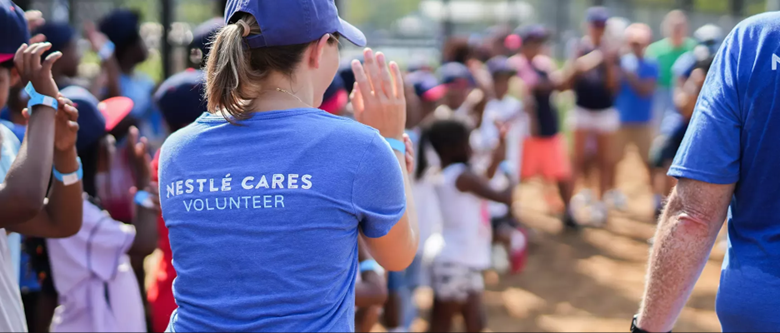
Nestle Community Engagement Image Source: Nestle
Community Engagement Events
For a long time, Nestle has recognized the building community engagement power of direct interaction with their customers. For instance, in 2021 Nestle promoted its launch of the UK-based plant-based product line “Garden Gourmet” through live cooking events and support of local festivals. Source.
In 2022 nestle introduced their new plant-based burger brand “Awesome Burger” by throwing a party at a few U.S. cities to introduce their product. Including live music from popular local bands, free samples, and giveaways that build hype for new products. Source.
At a global level, Nestlé supports the IFRC’s (International Federation of Red Cross and Red Crescent Societies) efforts in crisis response. In 2021, Nestlé sponsored the Chicago Marathon, providing on-course hydration and nutrition to over 35,000 runners. The company also partnered with Feeding America to donate $1 million worth of food to local food banks along the marathon route. Source.
Brand Immersion Experiences
In 2019, Nestlé opened a pop-up café in New York City to promote its new Nespresso Barista Creations coffee line. Source. The café was a mix of interactive demonstrations, tastings, and the chance to buy exclusive Nespresso items. Nestlé trains consumers on product benefits and health topics via workshops and conferences.
During the height of the COVID-19 pandemic in 2020, Nestlé also delivered a range of virtual workshops specific to gut health and nutrition. Source.
Customer Support and Feedback
Nestlé’s customer-centric approach is grounded in real-time data collection and service improvements. Through surveys and comment cards, Nestlé gathers immediate customer insights from in-store interactions. This enables swift responsiveness to feedback.
Nestlé’s service improvement initiatives turn feedback into action. The data collected from these surveys is analyzed regularly, allowing Nestlé to identify trends and areas for improvement.
To gain deeper insights into customer preferences and experiences, Nestlé conducts focus groups that bring together diverse groups of consumers. For example, feedback from focus group participants may lead to adjustments in product formulations or new product development that better aligns with consumer expectations.
Customer Experience and Offline Services
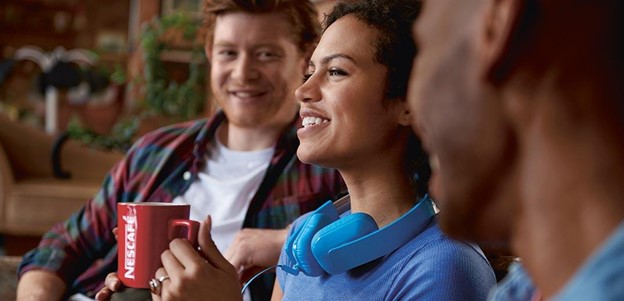
Nestle Customer Service Image Source: Nestle
This trilogy of Nestlé’s in-store customer engagement tactics is an illustration of a multinational company committed to establishing lifelong relationships with its consumers. Sampling and demonstrations are some of the most sure-shot methods that the company practices.
While the Company still engages in sampling events common to the industry, it is also incorporating innovative means of display that leverage technology and make shopping more interactive. Typically, these displays feature digital screens and interactive kiosks that offer the shopper product information, nutritional details, and personalized recommendations based on tastes.
Research indicates that 73% of consumers prefer to receive product information digitally while shopping, which explains Nestlé’s focus on tech-driven displays in its retail partnerships. Source.
Yet another crucial element of its offline customer engagement strategy is Nestlé’s loyalty programs. The company still aims to drive consumers back to the traditional sales channels by offering them special incentives such as loyalty cards or memberships that give discounts, rewards points, or exclusive ideas on new products. Nestlé’s Nespresso Club has over 7 million active members, contributing to a 12% increase in repeat purchases. Source.
Nestlé’s Customer Service Approach: Engaging Customers Across Platforms
Nestlé, a global leader in the food and beverage industry, employs a multifaceted approach to customer service that spans its official website, tailored customer help centers, and third-party platforms. This strategy ensures that the company meets the diverse needs of its consumers while maintaining a strong brand presence.
Customer Service Through the Official Website
Nestlé’s official website serves as a comprehensive hub for customer engagement. The site features a user-friendly interface where customers can easily access product information, nutritional details, and brand stories. Additionally, Nestlé provides a dedicated customer service section that includes FAQs, contact forms, and live chat options.
Tailored Customer Help Centers
In addition to its main website, Nestlé has developed tailored help centers for specific brands within its portfolio. For example, Nestlé Purina, the pet food division, utilizes interactive content and data collection tools to personalize customer interactions. By partnering with platforms like Jebbit, Nestlé Purina captures key consumer insights that inform product recommendations and marketing strategies.
Nestlé’s Online Customer Service
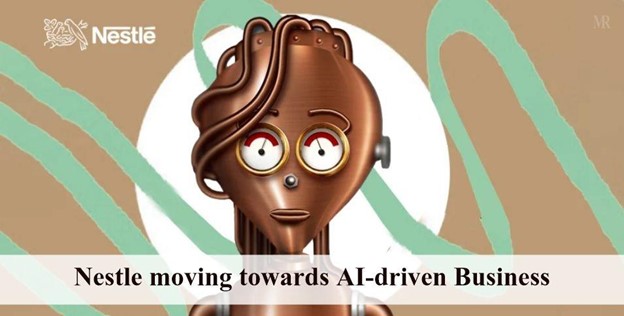
Nestle AI Image Source: Mirror Review
Omnichannel Approach
Nestlé leverages an integrated omnichannel strategy, delivering a cohesive experience across its multiple digital touchpoints, including brand websites, social media channels, and dedicated mobile applications. PissedConsumer data reports that 60% of clients choose to get in touch with Nestlé by phone, and 40% do it via email. Source.
As per the Nestlé Annual Report 2023, they have a footprint in more than 190 countries which is supported by a strong online presence on Facebook, Instagram, and Twitter connecting millions of customers via many avenues. Source.
AI-Driven Chatbot
Nestle is the name so popular for food products, which has used artificial intelligence (AI) to improve their customer support. At any time your customers need immediate support for FAQs and quick resolutions to their problems or issues, its AI-powered chatbots and virtual assistants provide 24/7 real-time assistance.
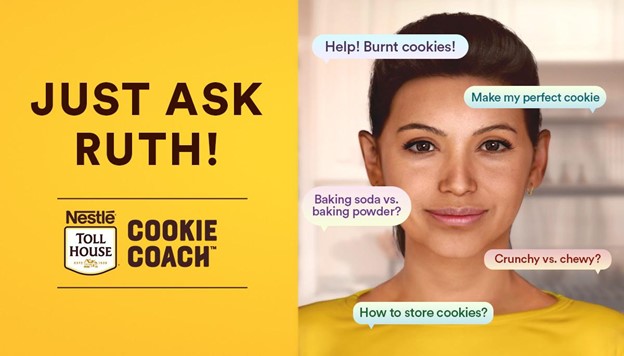
Nestle Cookie Coach Image Source: Adweek.com
The new Cookie Coach, a digital tool from Nestlé online customer service that suggests Toll House recipes and blasts baking tips to consumers, is unique because it’s interactive. This program was an answer to several incoming requests during the COVID-19 lockdown, where 70% of the calls that they received at their consumer engagement center were baking-related troubleshooting errors. Source.
Personalized Customer Engagement
By utilizing data from your customers, Nestlé does much more than drive user engagement; it also simplifies the user experience by offering various contents and products that suit different markets. As Betty Bakkali, Customer Relationship Management Activation Manager at Nestlé explains; “With the way digital is changing consumers’ lives, our mission as marketers is also evolving… Marketing today is about providing personalized consumer experiences” Source. This personalization has boosted customer satisfaction, with reports showing a 10% increase in customer retention.
E-Commerce Support
Nestle has a strong e-commerce-specific online support system. This includes helping with discovering the product to getting a hand with post-purchase support. By 2023, e-commerce sales represented about 15% of Nestlé’s total sales and embodied the increasing importance of digital purchases in its overall business model. Source.
Digital Communities
To foster a sense of community, Nestlé has developed online forums and social platforms where customers can share their experiences and provide feedback. For example, the Nestlé Baby & Me communities provide additional support with resources helping parents through specific stages of parenting. The company is also behind the Nestlé Wellness Club — a platform that allows users to interact with nutrition experts on top of boosting online engagement.
Proactive Customer Outreach
Nestlé’s digital customer service initiatives include proactive outreach. The company regularly engages customers through surveys, feedback forms, and personalized emails. This approach helps Nestlé stay ahead of customer concerns and deliver tailored solutions. In 2022, Nestlé conducted over 1 million customer surveys, enabling it to improve service offerings continuously. Source.
Technological Innovations In Nestle
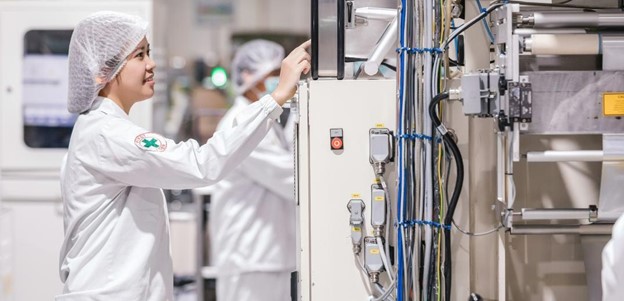
Nestle R&D Centers Image Source: Nestle
Personalized Nutrition Apps and Digital Platforms
Nestlé has embraced advanced technologies to optimize its operations and improve consumer engagement. For example, Nestlé Japan’s Wellness Ambassador Program provides AI-powered health recommendations based on users’ DNA and lifestyle data. Source. The company has implemented an AI system called Cortex, which provides creative guidelines for its 15,000 marketers. Source.
For example, Nestlé Purina has partnered with Jebbit to create interactive content that captures key consumer insights, enriching their existing first-party data. Source.
Sustainability through Technology
Nestlé has also embraced technology to drive its sustainability initiatives. Their focus on reducing environmental impact is evident in innovations in biodegradable packaging. Nestlé is committed to making 100% of its packaging recyclable or reusable by 2025, with significant investments in alternative materials such as paper-based and compostable packaging. Source.
Advanced Food Technology
- High-Pressure Processing (HPP): Nestlé employs high-pressure processing (HPP) to extend the shelf life of perishable products like juices and soups while preserving their nutritional value and taste. This non-thermal pasteurization method subjects food to high pressure (up to 6,000 bar) for a short time, inactivating pathogenic and spoilage microorganisms without the need for heat treatment. Source.
- Augmented Reality: Nestlé has significantly integrated augmented reality (AR) technology into its operations, particularly in response to the challenges posed by the COVID-19 pandemic. The company utilizes technologies such as remote desktop applications, smart glasses, 360-degree cameras, and 3D software to connect experts with factory personnel around the globe. Source
- Virtual Product Trials: The features of Virtual product trials help customers see how stuff like Nespresso machines or kitchen equipment would look and work at home. Nestlé is pioneering this move and it could be looked at as a strategic way to bridge the gap between the physical world retail experience and e-commerce where companies using AR in trials show a 94% increase in sales conversion rates, according to reports. Source
Future Trends and Outlooks for Nestle
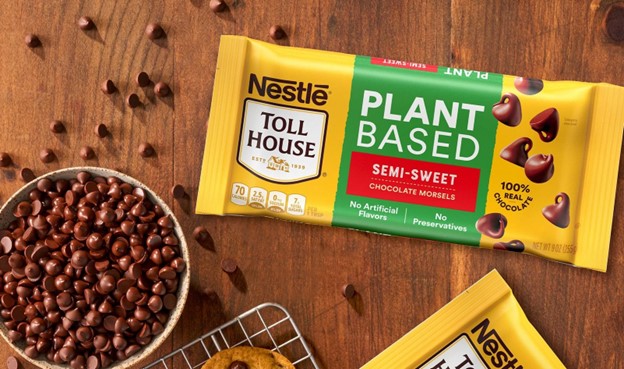
Nestle Plant-Based Foods Image Source: Vegnews
Nestlé is continuously adapting to the evolving landscape of the food and beverage industry. The company is focusing on several key trends that will shape its future strategies and operations. As of 2022, Nestlé reported that it had achieved a 30% increase in the use of recycled content across its packaging portfolio. Source.
- Expansion of Plant-Based Offerings
- Zero Net Green House Gass Emission by 2050
- IoT Integration
- Advanced Nutritional Solutions
- Reusable Packaging By 2025
Wrap Up
Nestlé’s journey through the global food market seems to reveal both its ability to survive and innovation. Nestlé’s influence has been felt in consumer preferences, market trends nutrition standards, and more, starting from humble beginnings up to becoming one of the world’s largest food and beverage companies.
Not only has the company’s dedication to quality and sustainability improved lives, but it has also triggered shifts in how we think about food.
(The information in the article is collected from public channels. If the data or pictures are infringing or inaccurate, please contact us to delete or modify it.)
Sobot’s Role in Elevating Customer Service
Sobot, a robotic process automation platform powered by AI, allows companies to automate and optimize their customer service operations. Sobot.io’s chatbots and virtual agents, which use advanced natural language processing (NLP) techniques as well as machine learning capabilities can deal with a broad range of customer queries 24/7 over different channels.
For large enterprises like Nestlé that receive millions of customer contacts annually, automation is crucial for providing fast, consistent support while keeping operational costs in check. Sobot’s AI-powered solutions enable companies to:
- Autonomously handle common questions and free human agents to focus on complex issues
- Triage incoming contacts for the appropriate resource (self-service, chatbot, live agent)
- Gather contextual data to custom-tailor interactions and predict customer needs
- Provide real-time performance metrics such as resolution rate, customer satisfaction, and agent effectiveness
AI-Powered Customer Service
At the core of Sobot.io is AI-driven technology, which allows companies to provide customer support non-stop. Automation not only reduces demand on customer service teams but also increases operational efficiency. This statistic underscores how vital automation is for large businesses like Nestlé, enabling them to efficiently manage millions of inquiries from customers while achieving high satisfaction rates.
Automation and Operational Efficiency
This statistic demonstrates the importance of operational efficiency to a global entity like Nestlé. Trained on Sobot.io, automation makes sure customer inquiries get answered quickly, frequently before they turn into larger problems. By using Sobot.io, Nestlé shows where automation can bring a better quality of service, ultimately building stronger customer relationships.
Real-Time Analytics and Insights
One of the features of Sobot.io is its real-time analytics and insights. These tools allow businesses to keep track of the customer’s interaction, measure performance metrics, and provide actionable recommendations. For example, organizations can pinpoint recurring problems such as customer issues later in the product cycle than originally anticipated and alter their approach accordingly.
Why Sobot is the Future of Customer Service?
In future development, Sobot.io is positioned as a key player in customer service. Specifically, the scalability of this platform is a boon to large enterprises helping them to extend support capabilities as they grow. Given the global reach of Nestlé, a solution is required that can handle increasing demands without compromising the level of service. With Sobot.io, businesses can easily up-scale their operations and still meet customer expectations however high or complex they may be.
(The information in the article is collected from public channels. If the data or pictures are infringing or inaccurate, please contact us to delete or modify it.)
